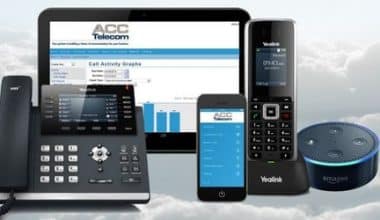One of the biggest challenges that businesses face is managing their data. Every traditional way of doing this is generally cumbersome. and even software tools are fast becoming obsolete. Through technology, we daily see advancements in 21st-century business analytics tools and no doubt value the great things they do in helping businesses manage their data and keep track of their data through management tools. It isn’t just about BI Tableau tools or the Microsoft Power PI, we have seen great tools, and managing metadata may not be a business heartache in the future.
What Are Business Analytics Tools?
Business analytics tools are software applications that pull data from one or more business systems and put it in a place where it can be analyzed and put into a category. like a data warehouse.
Generally, business analytics tools can be anything from spreadsheets to statistical software packages, advanced data mining tools, and predictive modeling tools. Whatever tools a business decides to use as its BI, it is important to have key insights as well as a better understanding of the business. This will generally ensure that every decision is about business operations, customer conversions, and more.
Personally, one of the most fascinating things about business analytics tools is that they are more than a means of putting their data in check or reporting the results of the data but also explaining why the results happened.
Top Business Analytics Tools
The following are some of the top analytics tools for business;
#1. IBM
IBM is famous for the multiple functions it offers users. Their business analytics tools can be used on-premises or as a hosted service through the IBM Cloud. They have two product lines. These are IBM Watson Analytics and Cognos Analytics. IBM Watson Analytics offers users an experience that is based on machine learning and includes automated pattern detection, support for natural language queries and generation, and built-in advanced analytics. On the other hand, Cognos Analytics offers users an integrated self-service solution. With this, they can let users access data to make dashboards as well as reports.
#2. Sisense
Sisense is yet another great software that made it to our list of business analytics tools. It’s quite famous among businesses. Sisense is famous for its dynamic and powerful text analysis features that let users turn unstructured text into useful business intelligence. With Sisense, users can analyze and visualize a lot of complex data, which helps them make decisions based on data and predict future trends better.
#3. Altair
This is a data analytics platform with built-in features for data processing and predictive analytics. We can also say it describes data as “pen, scalable, unified, and extendable.” Altair Monarch allows for data preparation at the desktop level, while Knowledge Hub facilitates team-driven data prep and a centralized data marketplace to improve cooperation and governance. Knowledge Studio features both machine learning and predictive analytics.
#4. Microstrategy
Microstrategy is one of the most up-to-date business analytics tools. It has powerful analytical and statistical tools that let you predict trends in real-time and mine data from third parties. Users can create and share business analytics reports from anywhere and on any device by combining a variety of business analysis tools and techniques.
#5. SAS Business Analytics (SAS BA)
SAS Business Analytics made it to our list of business analytics tools because of its exceptional features. One of these great features is that its SAS-based business analytics means users are allowed to look at unorganized text data and turn it into relevant information that analysts can use to find insights.
Additionally, the SAS business analytics tool software functions in real-time thanks to its tons of statistical tools that make it easier to analyze large amounts of data in real-time. The information from big data is used by the best business analytics platforms to predict future trends.
#6. Domo
Domo is a business analytics tool that helps organizations better integrate, analyze, and use data to enable rapid decision-making and action across the business. Trust Domo to help out while you build bespoke apps, automate data pipelines, and make data science accessible.
#7. Splunk
Ever heard of Splunk? Well, I’m sure you have. It’s one of the best business analytics for small businesses. It has a friendly user interface and different ways to show data.
#8. Salesforce Einstein Analytics
Salesforce Einstein Analytics is one of the various business analysis tools that allow users to design cutting-edge user interfaces by modifying preexisting templates, integrating third-party apps, or creating their own dashboards. The automatic data discovery features of the Salesforce business analytics software provide consumers with answers based on easily digestible AI models. Depending on the user’s position, their business, and the functionality they need, Salesforce’s Einstein Analytics platform comes in a variety of flavors. Users can modify analytics for their particular purpose, allowing for more insightful recommendations and direction.
#9. KNIME
You know, if we had ended this list without mentioning KNIME, then our list of the top best business analytics tools would have been incomplete. KNIME is one of the best high-performance business analyst software programs. It supports different machine learning and data mining components using the piping approach. Although KNIME has a unique feature, its primary aim is to build support for continuous analysis, visual programming, and a smooth business analytics report.
#10. Infor Birst
If you’re looking for business analytics tools that help businesses use BI provisioning, cloud-based, decentralized analytics, you really should consider Infor Birst. With the Infor Birst business analytics tool, organizations can share data and insights with Infor Birst, a business analytics tool. The provider’s Networked BI platform is its bread-and-butter offering. With this software, you may have a fully virtualized data ecology, an adaptive user interface, and a multi-tenant cloud architecture. When combined, these features make BI usable across a wide range of geographic areas, product categories, internal departments, and external consumers. Customers typically employ the solution for business intelligence provisioning and, due to its cloud-based nature, decentralized analytics.
Sap Business Analytics Tools
SAP analytics are suites of data warehousing and analytics tools that enterprises may use to spot trends and insights within their proprietary data sets and take appropriate action on them.
BI Tools Tableau
Tableau BI tools help users quickly connect to data sources, visualize that data, and build interactive dashboards. Aside from the above, users can share data with others. I wouldn’t really say it’s simple, but if you’re good with Excel, then you can deal with it. However, it’s actually one of the most recommended business
What Are The Key Features Of SAP Business Analytics?
The following are the key features of SAP business analytics;
#1. Data Warehousing
SAP makes it easier to get to data by saving and subsequently sending rich semantic information through the cloud. In real-time, the SAP data warehouse cloud combines data from different sources and processes it into a single, secure database that can be used for analysis.
#2. Augmented Insights
In augmenting insight, SAP business analytics tools recognize patterns in the data. It then uses the insight it gathered from these data to boost growth.
#3. Customized Environment
There are several people that love customizing their things. I so love personalizing my things. Just in case, you’re one of those people who love giving their items a personal look, trust SAP. Trust SAP business analytics tools to allow you to customize your environment just the way you want it. Additionally, it brings together data from many different sources and gives organizations a lot of ways to customize it to meet their specific needs. SAP HANA also provides multiple tenant databases that ensure completely unique instances of the software, even within an organization.
#4. Real-Time Processing
With an easy-to-use user interface, SAP BW/4HANA makes sure that large amounts of data are processed in real time. Users can use simplified data modeling to find insights and make predictions in real-time.
#5. Centralized Planning
SAP Analytics Cloud and SAP integrated business planning enable real-time scenario simulations, predictive analytics, embedded analytics, and reporting functionalities.
What tools are required for business analysis?
SQL, Teradata, and Hive are used to acquire data. Project management teams may more easily communicate and collaborate with one another thanks to IBM’s end-to-end requirement management platform, Rational Requisite Pro.
What are the 3 types of business analytics?
Businesses rely on three different forms of analytics to help them make decisions: prescriptive analytics, predictive analytics, and descriptive analytics. Prescriptive analytics tell us what should happen in the future.
What are the three analysis tools?
Three categories of data analysis tools—Excel, BI (business intelligence) software, and R and Python—stand out as being fundamental.
What are the 5 V of big data?
Big data is a collection of information from numerous sources, and it is frequently defined by five factors: volume, value, diversity, velocity, and veracity.
What are the 5 types of analysis?
There are five major forms of business analytics: descriptive, diagnostic, predictive, prescriptive, and cognitive. A large amount of data is processed at various phases of business analytics.
Is SQL used in business analytics?
In order to generate reports and make business choices, business analysts frequently utilize SQL to manage the data in databases.
What are the two main components of business analytics?
Business intelligence (BI) and statistical analysis are often thought of as the two fundamental components of business analytics. For reporting, dashboards, visualizations, and online analytical processing (OLAP) of historical data analysis, BI is widely used in businesses.
What are 7 Vs of big data?
After spending a lot of time, effort, and resources on volume, velocity, variety, variability, truthfulness, and visualization, you want to make sure your company is gaining value from the data.
Is Excel a structured data?
SQL databases or Excel files are typical instances of structured data. Each of them has a set of organized, sortable columns and rows.
List of Tableau BI Tools
The following is the list of tableau BI tools
#1. Tools in Data Analytics
Under tools in data analytics, we have products like Tableau Server, Tableau Reader, and Tableau Online that fall into this category. During the development phase, developers use tools to build things like dashboards, charts, and reports. The knowledge of how to use these tools and the ability to exchange data, dashboards, and visualization techniques with the aid of developer tools is what makes collaboration so effective.
#2. Tableau Desktop
In this program, the user only needs to remember one code to make all of the necessary adjustments to the reports. It put the groundwork for a Tableau desktop dashboard together by creating charts as well as reports. Data sources and connectivity are separated sections.
#3. Tableau Desktop Personal
The development tools are very much like those seen in Tableau. In this instance, however, the workbook is being accessed in its private mode, which restricts the access route. This means the worksheet is not to be shared publicly or distributed to individuals.
#4. Tableau Desktop Professional
Tableau desktop professional is more like Tableau desktop. They are both built on data and analyses that were originally created on the Tableau desktop and then uploaded to the Tableau server. However, there’s an exception and that’s in line with its accessibility. All forms of data are fully accessible here unlike tableau personal that’s limited.
#5. Tableau Reader
Tableau Reader is the viewer for workbooks and visualizations made on Tableau Desktop and Tableau Public. One of the special features of the Tableau reader is that you can easily filter data and even alter it if you want. The data is easily filterable and it can only be slightly altered. Additionally, the tableau reader doesn’t contain encryption, which makes it easily accessible.
#6. Tableau Server
In organizations where the tableau desktop is used, the workbook and visualization process is shared via the tableau server. All you have to do is publish the data on your desktop and everyone with that system will have access to it.
#7. Tableau’s server
Tableau’s server has a robust firewall, so the business can feel at ease when sharing data. The wide community of BI specialists is available to answer any questions the user may have.
#8. Tableau Online
Tableau Online is a data-sharing component very much like Tableau Servers. Data, however, is kept in the cloud, which is handled by a Tableau team. Well, before you publish your data, you’ll have to use the Tableau Desktop workbook. So it’s more like your data depends on a desktop workbook.
#9. Embedded Analytics
By including the data in the external application, embedded analytics can provide analytics, dashboards, and reports to those outside the firm, such as partners, suppliers, and customers. Clients can then use this data to create their own unique solutions. Each and every one of the user’s activities can be tailored to better appeal to the user and provide the user with the highest possible level of efficiency.
Microsoft BI Tools
Microsoft Business Intelligence BI tools are generally software programs that help firms deal with the massive amounts of valuable business intelligence data they generate on a regular basis.
What Are Microsoft BI Tools?
Microsoft Business Intelligence products are made to make working with data simple. The program’s goal is to assist organizations in cleaning up their massive amounts of complex data so that useful insights may be drawn from them. So we can simply say they are business analytics tools.
What Are Examples Of Microsoft BI Tools?
The following are some of the examples of Microsoft BI tools available;
Why is Power BI Important?
The top Microsoft business intelligence tool is its innovative Power BI service. It’s a curious mix of SaaS, desktop, and cloud-based tools.
- Power BI Desktop
- Power BI Pro
- Power BI Premium
- Power BI embedded
- Power BI Report Server
Which Tools Are Used For Business Analytics?
The following are some of the tools used for business analytics
- Dundas BI
- SAS Business Analytics (SAS BA)
- Splunk
- QlikView
- Microstrategy
- Board.
- Sisense
- KNIME
What Are The 4 Types Of Business Analytics?
- Descriptive
- Diagnostic
- Predictive,
- Prescriptive
Is SQL Required For Business Analyst?
SQL knowledge being a requirement for business analysts depends on the type of business in question. It is necessary but not mandatory for every business. SQL is the language we use to tell the computer to do that task. Most companies now use big data and relational databases, so knowing SQL is a requirement for almost every business analyst job.
What Are The 5 V’s Of Data Analytics?
- Velocity
- Volume
- Value
- Variety
- Veracity
Conclusion
While it’s true that business intelligence tools do collect and show aggregate data, there’s more to this than meets the average eye. Aside from the above, business analytics tools go a step further by not only reporting the results of the data but also explaining why the results happened.
Business Analytics Tools FAQs
What are the stages of business analytics?
The following are the stages of business analytics
- Descriptive
- Predictive
- Prescriptive
What is the future of a Business Analyst?
Since a Business Analyst is exposed to more of the SDLC in their role, they may eventually be promoted to Project Manager, Functional Consultant, Product Owner/Analyst, Pre-Sales Consultant, or even IT PMO.
- Top 11 Business Intelligence Software and Tools In 2023
- BUSINESS INTELLIGENCE (BI): Definition, Importance, Tools & Benefits
- Prescriptive Analytics Tools & Techniques: 9+ Best 2023 Options
- IDENTITY MANAGEMENT SYSTEM






